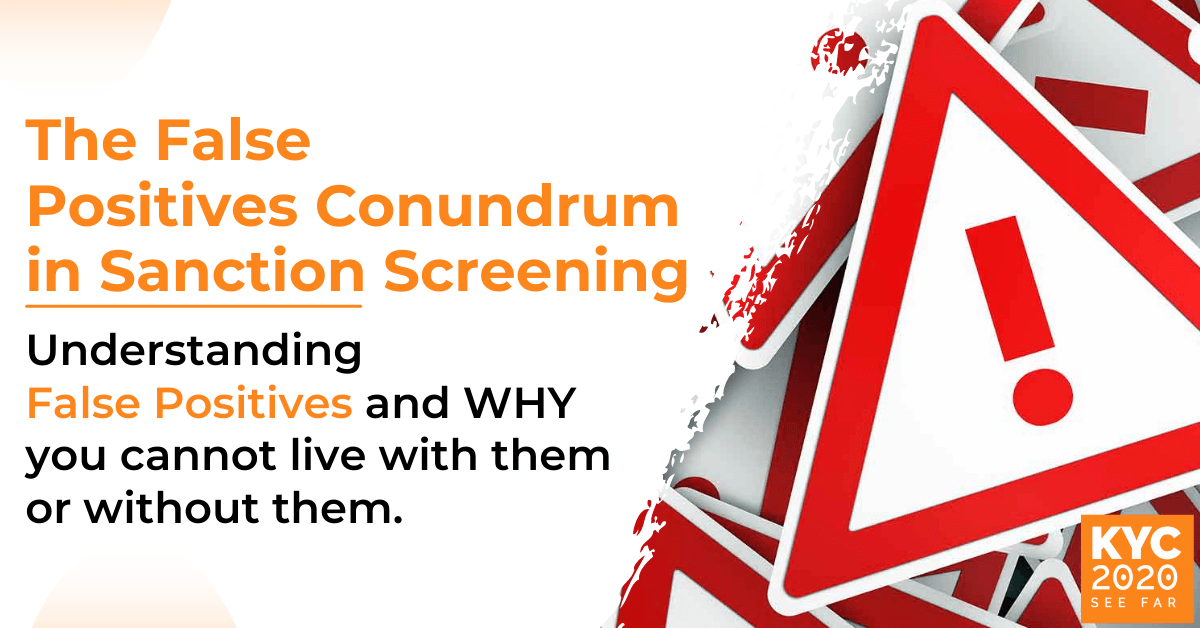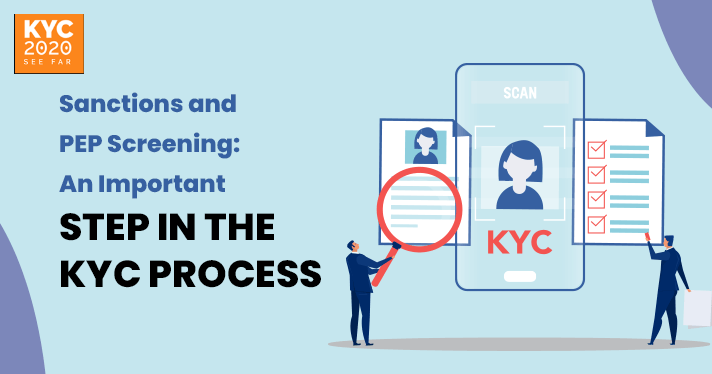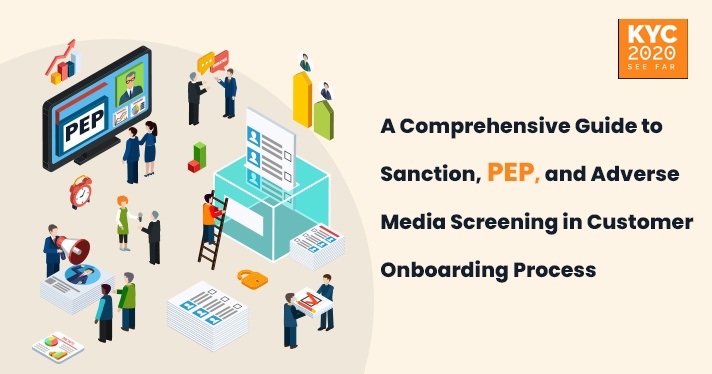In sanctions screening, financial institutions constantly face a false positives conundrum: They can’t live with them, but they can’t live without them, either.
Getting sanctions screening right is a growing priority for financial services institutions in their AML/CFT compliance program. The constant drumbeat of increasing regulatory requirements, the mix of customer profiles that grows more complex by the day, and an ever-expanding menu of financial products and services have only made such due diligence all the more critical.
However, current AML/CFT detection systems and procedures that lean heavily on rules-based screening engines and manual inputs can not keep up with today’s reality. The issue of false positives is arguably one of the most consequential areas this plays out. On one hand, financial institutions need a new set of tools to accurately detect true matches and reduce the occurrence of false positives. On the other hand, too few false positives in an indication that an institution’s AML systems are not appropriately calibrated to catch the wily evaders.
What are False Positives and Why Do They Happen?
In its most basic form, an AML compliance program includes three fundamental functions:
- Assess the risk of new and current customers
- Implement screening measures to weed out clients who present a high risk for financial crimes
- Conduct ongoing monitoring of customer activity
There are really two goals to an organization’s AML program. The first is to create an alert system that can efficiently identify and actively prevent the emergence of money laundering and other financial crimes within the organization. The second is to avoid regulatory sanctions and their fallout like the plague.
These two goals are often at odds with each other. Moving from financial crime identification to financial crime prevention can be a resource-intensive high-wire act.
In order to comply with the strict regulatory requirements and stiff fines for non-compliance, financial institutions will often operate on the side of caution in their screening and monitoring efforts. That is, they will lean towards “Over-Screening“. In practice, this means the definition of suspicious activity, for example, would include a very broad range of actions and behaviors– each of which will generate an alert.
An AML alert does not necessarily mean that criminal activity of any kind is in fact happening. It is quite common for a subsequent manual review to result in a cleared warning. When this happens, it is called a false positive.
Such manual reviews are simply “baked” into the AML compliance system of many traditional and established financial institutions. The time and resources required to conduct this oversight is then written off as the cost of doing business.
The added piece of mind comes with a big price tag, however. The industry average rate of false positives currently hovers around 42%. But for larger institutions it can reach a whopping 95%. This translates into millions and even billions of dollars of lost revenue each year.
Another indirect cost of a high false positive rate is the negative impact it has on the customer experience. In recent years, the financial services industry has been required to pour more resources into the experience users have as they move through the buyer’s journey. According to the 2020 Digital Banking Report, customer experience is a key element in maintaining a competitive edge. Customers increasingly want financial institutions to provide personalized services. This is putting increasing pressure on financial institutions to perform to rapid, frictionless transactions and offer personalized customer communications.
A large number of false positives can slow down the on-boarding process as well as customer transaction times. They are thus an obvious stumbling block. However, compliance teams must find a way to reduce their rate of false positives without compromising the accuracy and effectiveness of AML transaction monitoring and screening.
What are Your False Positives Telling You?
The solution to the false positives conundrum is to fundamentally change the way your organization perceives false positives in the first place. False positives are a necessary and unavoidable occurrence. When your rate of false positives stays within a healthy range appropriate for your user base and risk profile, then it is a sign that your institution is on the right track.
When the number of false positives steps outside of that range, then you’ll want to pay attention. You are getting valuable information about your AML compliance efforts. Usually, it means that something within your system has to be tweaked or reworked.
Let’s consider a few examples…
Scanning sanctions watchlists and associated data, such as adverse media and PEP lists, coupled with ongoing transaction monitoring require firms to process and analyze a vast amount of information from a variety of sources which are themselves evolving. With sanctions screening in particular, these sources often vary wildly in quality and completeness, and they are bloated with redundant or useless information. On top of this, they generally come in an unstructured format.
A high rate of false positives could simply be the result of relying on poor data pools full of outdated or irrelevant information that has been ineffectively culled, organized and structured. Of course, the more confusing the data, the more challenging it becomes to discern false positives from true positive matches.
For this reason if your institution is experiencing an unusually high rate of false positives, you may want to reevaluate your data capture. You need to ensure it truly fits the needs of your organization along with the reality of the market base you are servicing.
For example, we developed VisionIQ, a comprehensive watchlist database with access to over 1000 watchlists and automatically updated news sources from more than 200 countries. VisionIQ is powered by advanced technologies, such as artificial intelligence (AI) and natural language processing (NLP). This smart data system is structured and organized to make it easy to selectively group watchlists for different risk profiles and screening criteria. Data is de-duplicated and cross-linked across watchlists to better resolve the data into personas.
Smart data by itself may help reduce the rate of false positives, however, it may not be enough. Part of the challenge is being able to manage the sheer volume and velocity of data creation today, as well as the constantly growing number of data sources. Even the best compilation of data and news is useless without an intelligent search and scoring engine built on AI algorithms and machine learning. Such an automated screening solution can significantly reduce labor-intensive manual interventions. In the process it will significantly minimize False Positives, while helping to ensure that True Positives are discovered.
Utilizing an automated screening solution solves yet another factor in a high false positives rate: the need for real-time data updates. It’s common for those involved in financial crimes to change their names or move to another region in order to avoid prosecution. It’s also common for innocent individuals to make such life changes.
Your organization should thus ensure that the customer data you are relying on is both relevant and up-to-date. A false positive might be created, for example, if a firm neglects to update a user’s change of name or list their new home address– particularly if the new region presents less of a risk than that of the previous residence.
When Even a Little Becomes A Lot
When it comes to false positives, some organizations, for example, a financial services business, may discover that their ability to conduct manual reviews on even a moderate rate of false positives is a struggle. Despite all the advances in technology, sanction screening still requires a significant amount of manual intervention that can dramatically slow down and disrupt the customer verification and on-boarding processes. Many sanction screening solutions on the market are designed to filter a set of watchlists. The search results must then be manually exported for review.
For nimble organizations with limited human resources, there are stand-alone decisioning systems that yield screening decisions in real-time without requiring manual review. This of course includes the automatic clearing of false positives using AI.
A smart, AI and NLP based sanction and PEP screening decision system, like our very own DecisionIQ™, can render 95% of all verification decisions automatically within a 60-second response time and a low decision error rate. For records that still require manual screening, they can be sent within minutes to compliance officers, who should have all the info they need to take immediate action. The screening decisions are then setup for ongoing monitoring based on your risk-based approach.
Slow customer on-boarding and the constant drumbeat of false positives will quickly eat up your profitability and your competitive advantage. On the other hand, failing to identify criminal financial activity can lead to unwanted regulatory attention and action.
The use of smart automated technologies can help to alleviate the challenge of false positives in sanction screening more effectively, more rapidly, and more affordably than ever before.











